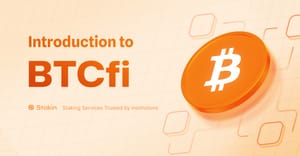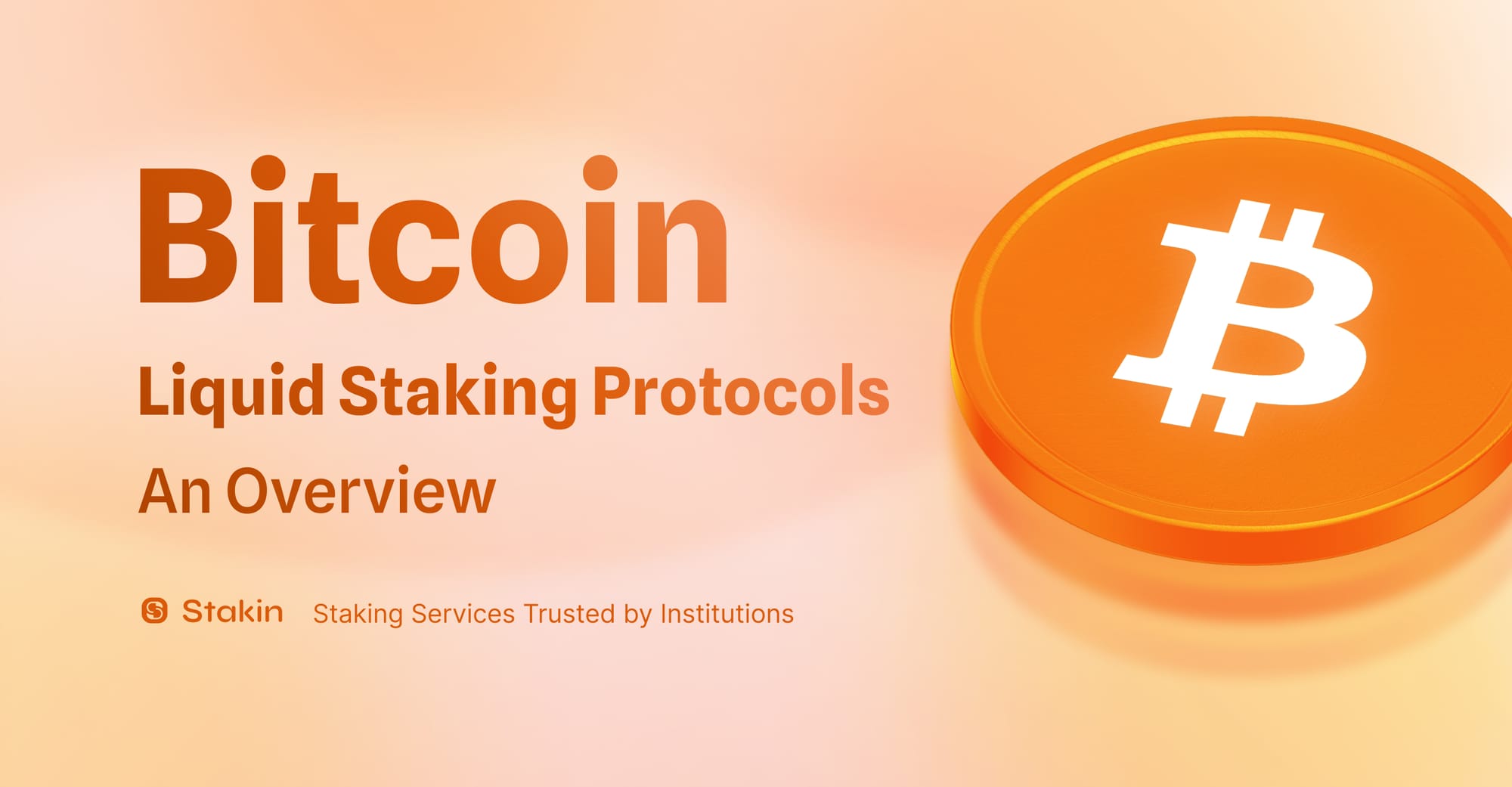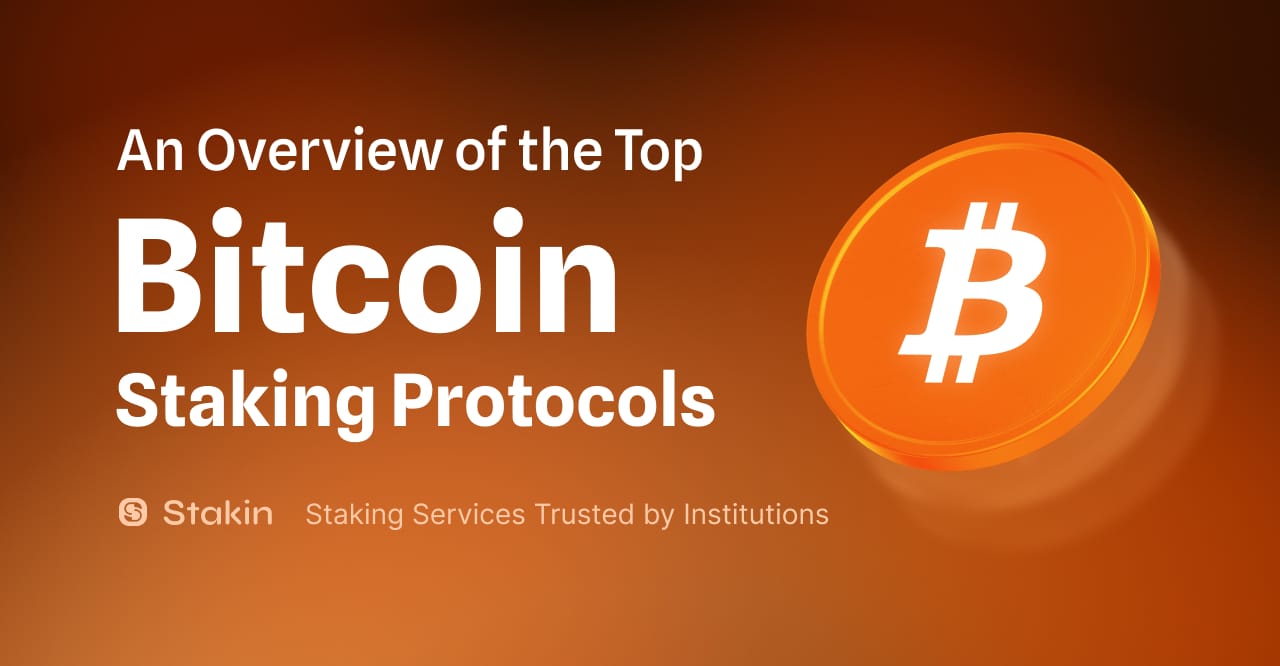What Is BTCFi?
BTCFi (short for Bitcoin Decentralized Finance) refers to the emerging ecosystem of financial applications built on and around the Bitcoin network. In simple terms, it’s about bringing DeFi functionality: things like lending, borrowing, staking, trading, and more into the Bitcoin world. Bitcoin is the largest cryptocurrency (over a trillion-dollar market cap), yet the vast majority of BTC sits idle in cold storage as an unproductive asset. Bitcoin DeFi aims to unlock this dormant capital and expand Bitcoin’s utility beyond just “digital gold.”
BTCFi essentially transforms bitcoin from a passive asset into a productive one. Instead of simply holding and waiting for price appreciation, BTC holders can now put their bitcoin to work. For example, users can earn returns on their BTC or use it as collateral in decentralized protocols while still benefiting from Bitcoin’s renowned security. This concept has quickly gained traction: BTC-Fi's TVL has grown from just $30 million in early 2024 to nearly $10 billion by mid-2025, and institutional investors have taken note of Bitcoin’s increasing yield-bearing capabilities. In short, BTCFi is turning Bitcoin into a more dynamic financial asset without compromising its core strengths.
The Problem: Bitcoin Was Powerful but Passive
Bitcoin’s design makes it highly secure and decentralized, but it came with trade-offs that left it somewhat “passive” in terms of on-chain utility. The Bitcoin network was originally built for simple peer-to-peer digital cash transactions, and it intentionally limited its scripting language and programmability to minimize attack surface and complexity. This conservative design has been a strength for Bitcoin’s robustness, but it meant that sophisticated financial applications (like those in DeFi) could not be built directly on Bitcoin L1. Bitcoin lacked native support for smart contracts, so it could not natively offer things like complex lending protocols, automated market makers, or yield farming.
Because of these limitations, DeFi innovation in the past decade largely bypassed Bitcoin and flourished on other chains (notably Ethereum). Bitcoin, for all its dominance in market value, remained mostly a “store of value” and reserve asset, earning no yield unless holders entrusted their BTC to centralized lenders or wrapped it onto other blockchains. The culture of Bitcoin also prioritized security and simplicity over experimentation on the base layer, further slowing DeFi adoption on Bitcoin. Early attempts to extend Bitcoin (such as Colored Coins in the 2010s) never achieved broad usage, and the idea of Bitcoin DeFi was long considered impractical. In short, Bitcoin was incredibly powerful in preserving value and network security, but it was a passive asset, it just sat in wallets, unable to directly participate in the kind of on-chain financial activities that became popular in the Ethereum-led DeFi wave.
Enabling DeFi on Bitcoin
Several developments in recent years have opened the doors for DeFi on Bitcoin, turning it from a static network into one that can support dynamic applications. A key milestone was the Bitcoin Taproot upgrade in 2021, which improved privacy and flexibility of Bitcoin’s scripting abilities. Taproot unlocked the possibility of building more complex smart contracts on Bitcoin by allowing more complex spending conditions to be expressed compactly, this set the stage for new protocols that leverage Bitcoin’s security while extending its functionality.
Not long after, builders found creative ways to implement tokens and contracts on Bitcoin. The rise of Ordinals in early 2023 demonstrated that Bitcoin’s base layer can handle NFTs and arbitrary data inscriptions. Through Ordinals, users began inscribing digital art and collectibles directly on the blockchain, and this concept was extended to fungible tokens via the BRC-20 standard. Suddenly, Bitcoin had its own version of token minting and NFT minting without any changes to its core code. By late 2024, even more advanced token standards like Runes were introduced, representing the first Bitcoin-native fungible tokens with improved efficiency. This flurry of on-chain innovation drove a huge uptick in Bitcoin network activity and fees, showing the appetite for Bitcoin-based DeFi primitives.
What BTCFi Does
BTCFi brings many of the familiar DeFi services to Bitcoin holders. Here are the primary functions and use cases of Bitcoin DeFi, and how they are enabled:
- Lending & Borrowing: BTC holders can lend out their bitcoin to earn interest, or use their BTC as collateral to borrow other assets. Smart contract platforms (often on Bitcoin sidechains or layer-2s) facilitate trustless lending markets so that you can, for example, borrow stablecoins without selling your BTC.
- Staking Bitcoin: Although Bitcoin’s base layer doesn’t use proof-of-stake, BTCFi has introduced ways to “stake” Bitcoin through secondary protocols. Platforms enable BTC holders to lock up or delegate BTC (or related tokens) and earn yield. These approaches effectively introduce BTC staking rewards and help secure their respective networks.
- Decentralized Trading (DEXs): Bitcoin DeFi includes DEX platforms for trading assets without centralized intermediaries. Because Bitcoin’s base layer has limited smart contracts, many DEXs run on Bitcoin layer-2 networks.
- Stablecoins: A growing variety of Bitcoin-backed or Bitcoin-native stablecoins are emerging. These are tokens pegged to stable assets (like USD) that operate on Bitcoin-linked networks. One example is USDB, a fully dollar-backed stablecoin issued on the Bitcoin Spark layer-2, which is fully collateralized 1:1 with USD reserves. There are also Bitcoin-collateralized stablecoins such as DOC (Money on Chain) on RSK, which maintain a USD peg using BTC as collateral. Stablecoins give Bitcoin holders access to price stability and liquidity (for trading or yield farming) without leaving the Bitcoin ecosystem.
- Bitcoin NFTs and Tokens: Thanks to recent innovations, Bitcoin now supports its own tokens and NFTs. Additionally, new token standards like BRC-20and Runes enable fungible tokens on Bitcoin’s base layer. This means users can mint and trade tokens (e.g. meme coins or project tokens) natively on Bitcoin, expanding Bitcoin’s functionality into areas once limited to Ethereum or Solana.
BTCFi in Context: What Productive Bitcoin Means for Holders
BTCFi represents a natural evolution for Bitcoin from a passive store of value to a productive financial asset by opening up ways for Bitcoin holders to earn yield, obtain liquidity, and use decentralized services, BTCFi effectively brings the world’s largest crypto asset into the modern DeFi economy. This is significant for several reasons. First, it gives Bitcoin holders new options for passive income: instead of holding BTC and hoping for price appreciation alone, they can generate ongoing returns (in BTC or other assets) without having to sell their beloved coins: this meets a real demand, especially among long-term investors who until now had few ways to put their BTC to work. A Bitcoin that can earn “crypto dividends” in a trustless manner becomes more attractive to hold over the long term.
Secondly, Bitcoin DeFi could strengthen the Bitcoin ecosystem itself. If more BTC is utilized in lending, staking, and trading, it drives more on-chain transactions and fees, which in turn can contribute to Bitcoin’s security budget (as mining rewards decline over time). It also increases Bitcoin’s utility: BTC isn’t just gold in a vault; it can be collateral, it can be liquidity in an AMM, it can be part of a yield-bearing portfolio. This expanded utility might lead to broader adoption of Bitcoin technology by users who need those financial services but want them backed by Bitcoin’s security. We’re already seeing venture capital and institutions show interest in BTCFi projects, viewing them as a convergence of the old and new finance. With over $175M invested in H1 2025 and major firms like custody banks and fintechs exploring Bitcoin yield products, it’s clear that the big players consider BTCFi a key to unlocking Bitcoin’s next phase of growth.
Finally, staking is emerging as the entry point for many Bitcoin holders exploring DeFi for the first time. Staking is conceptually simple: lock up BTC, get yield, which makes it an easy entry point for those who might be wary of trading or unfamiliar with DeFi. As platforms streamline the user experience (for example, providing custody solutions and audited contracts), a conservative Bitcoiner might be willing to timelock a portion of their BTC for, say, a 5% annual return. From there, they may become more comfortable exploring other BTCFi services (maybe lending out a stablecoin or trying an L2 DEX) because the first leap has been made. In this way, Bitcoin staking could be the catalyst that onboards a wave of Bitcoin natives into decentralized finance, much like how Ethereum’s merge and liquid staking tokens sparked new interest in DeFi on Ethereum. The introduction of a true Bitcoin-native staking mechanism was even hailed as a historic milestone, it was the first time BTC holders could directly participate in securing a crypto network via staking, a sign of how far the ecosystem has come.
You may also be interested in:
Conclusion
In conclusion, BTCFi matters because it bridges the gap between Bitcoin’s enormous reservoir of value and the innovative financial applications that have been developed in the crypto space. It brings the best of both worlds together: Bitcoin’s security, liquidity, and brand with DeFi’s creativity and yield opportunities. There are certainly challenges ahead (technical hurdles, security risks, and the need to ensure decentralization isn’t compromised), but the trajectory is clear. As one analysis put it, BTCFi represents a “significant evolution” in Bitcoin’s role, expanding it beyond the traditional digital gold narrative into a full-fledged, yield-generating, and utilitarian asset class. For Bitcoin holders, it means more ways to grow their wealth without abandoning Bitcoin. For the crypto industry at large, it means the original blockchain can finally participate in the decentralized finance revolution, potentially bringing Bitcoin’s massive capital and network effects to bear on the next generation of financial products. In short, Bitcoin DeFi is making BTC productive, and that could profoundly shape the future of both Bitcoin and DeFi in the years to come.
DISCLAIMER : This is not financial advice. Staking, delegation, and cryptocurrencies involve a high degree of risk, and there is always the possibility of loss, including the failure of all staked digital assets. Additionally, delegators are at risk of slashing in case of security or liveness faults on some protocols. We advise you to do your due diligence before choosing a validator.



